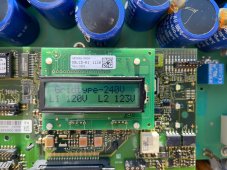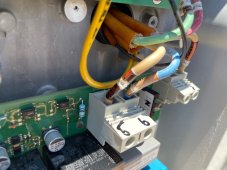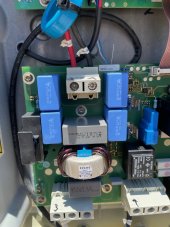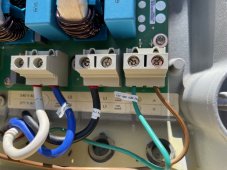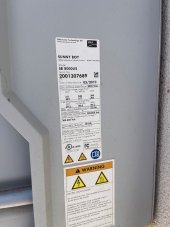Phoenix PV
New Member
9.02 Kw on grid system with SMA SB8000 inverter - I have recently experienced an Inverter reset issue when my Air Conditioning unit starts (See figure). I have a SENSE monitoring on the PV and load side and can see a power demand spike coincident with the inverter reset. Estimated draw of the spike is 4000 watts at 240 V - appx 15 amps (well within the 40 amp breaker).
I suspect the voltage may be drooping at the inverter (200 amp panel, AC breaker at the top, PV breaker at the bottom).
I have installed new start capacitors and surge protectors on the AC systems.
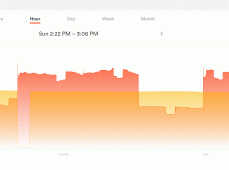
Yellow PV Watts generated (0 - 10Kw). Red is AC load. NOTE: reset one time and not the other with similar peaks.
1) Has anyone experienced this issue?
2) More importantly, has anyone solved this issue?
Surge protectors are looking for spikes, whereas this is a droop.
3) Are there AC "Hold Up Devices" (Power quality) that could minimize the droop.
I appreciate all interactions (even sympathy!)
Best regards,
Mike
I suspect the voltage may be drooping at the inverter (200 amp panel, AC breaker at the top, PV breaker at the bottom).
I have installed new start capacitors and surge protectors on the AC systems.

Yellow PV Watts generated (0 - 10Kw). Red is AC load. NOTE: reset one time and not the other with similar peaks.
1) Has anyone experienced this issue?
2) More importantly, has anyone solved this issue?
Surge protectors are looking for spikes, whereas this is a droop.
3) Are there AC "Hold Up Devices" (Power quality) that could minimize the droop.
I appreciate all interactions (even sympathy!)
Best regards,
Mike



